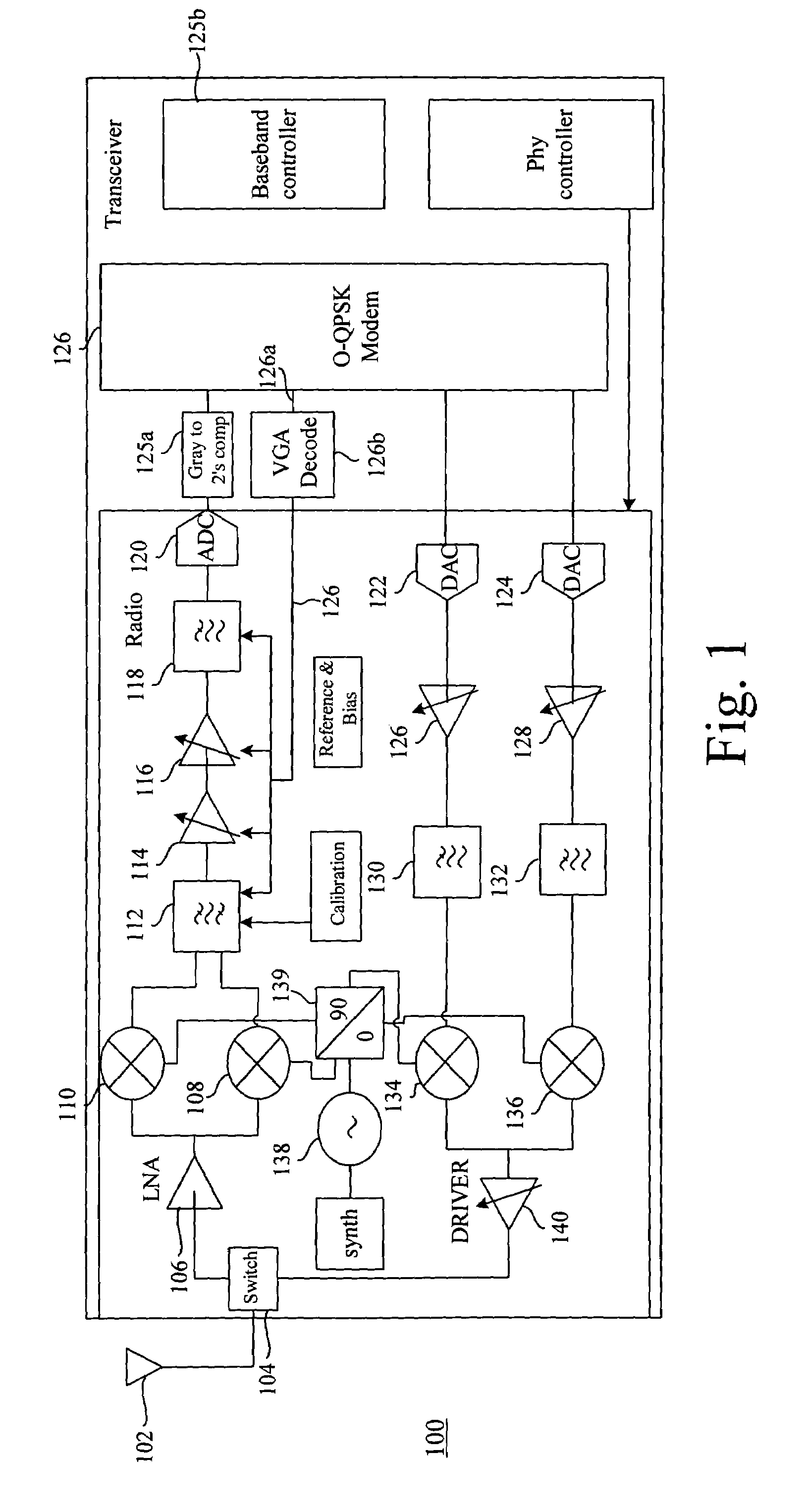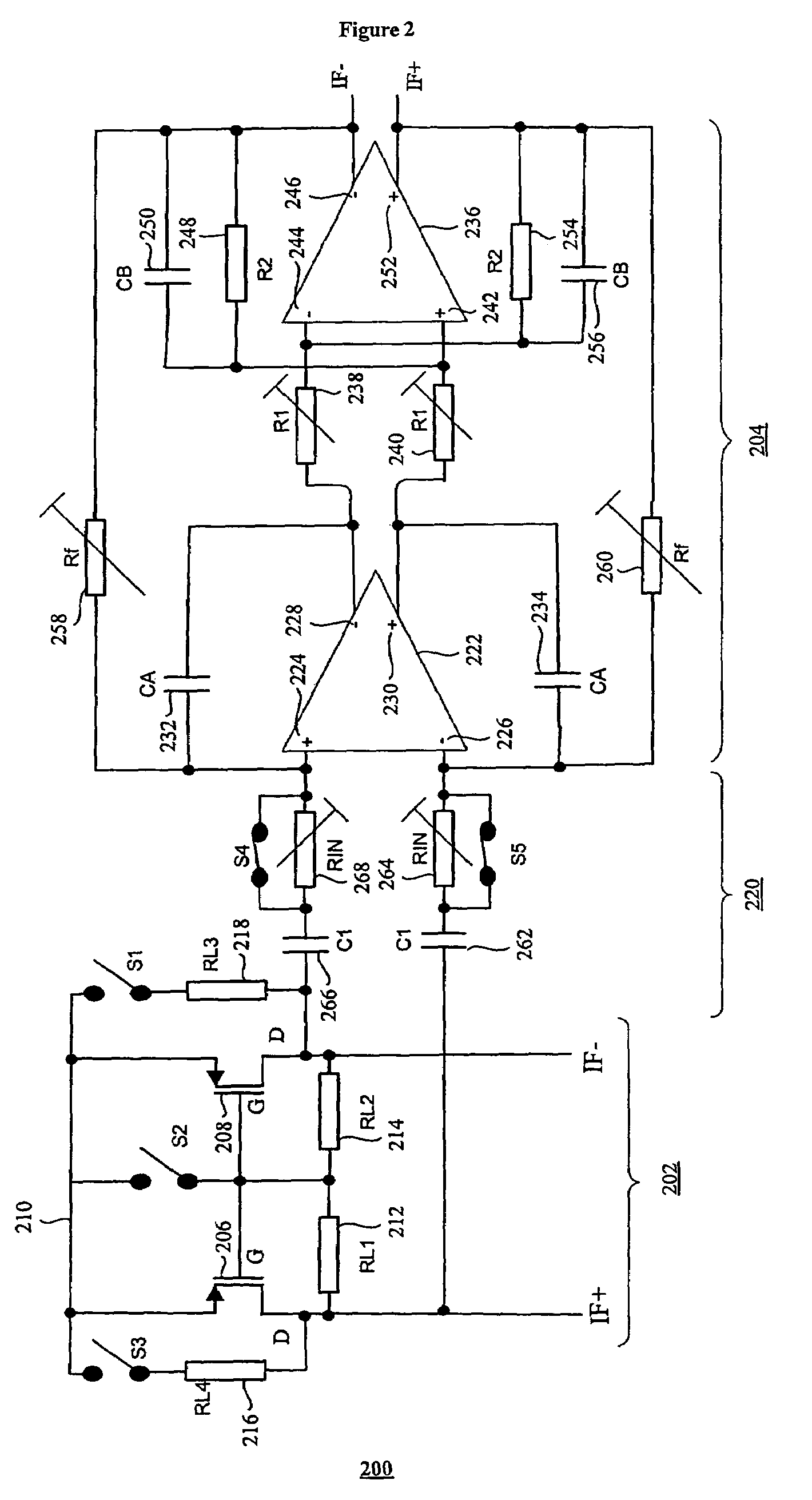Radio receiver/transceiver including an interface circuit selectively operable in a current mode or a voltage mode
a radio receiver and transceiver technology, applied in the field of radio receivers/transceivers, can solve the problems that transceivers operable in current mode and transceivers operable in voltage mode are unsuitable for use in wireless environments, and achieve the effects of reducing noise contribution, low gain, and improving optimisation
- Summary
- Abstract
- Description
- Claims
- Application Information
AI Technical Summary
Benefits of technology
Problems solved by technology
Method used
Image
Examples
Embodiment Construction
[0032]FIG. 1 shows a transceiver 100. The transceiver comprises an antenna 102 coupled to a switch 104. The switch 104 is arranged to direct a received signal to a low noise amplifier 106. The low noise amplifier 106, having amplified the received signal, feeds that received signal to a pair of I and Q channel mixers 108 and 110 to produce I and Q channel IF signals that are band pass filtered by a band pass filter 112. The filtered IF signals are amplified using a pair of variable gain amplifiers 114 and 116. The amplified signals are then filtered by a low pass filter 118 to produce a baseband signal that is digitised using an analogue to digital converter 120. The digital signal is converted from Gray coding to 2's complement format, via a converter 125a, and passed to an O-QPSK modem 126 for subsequent output to a baseband controller 125b. A control signal 126a is generated by the O-QPSK modem 126 and processed by a variable gain amplifier decoder 126b for converting the control...
PUM
 Login to View More
Login to View More Abstract
Description
Claims
Application Information
 Login to View More
Login to View More - R&D
- Intellectual Property
- Life Sciences
- Materials
- Tech Scout
- Unparalleled Data Quality
- Higher Quality Content
- 60% Fewer Hallucinations
Browse by: Latest US Patents, China's latest patents, Technical Efficacy Thesaurus, Application Domain, Technology Topic, Popular Technical Reports.
© 2025 PatSnap. All rights reserved.Legal|Privacy policy|Modern Slavery Act Transparency Statement|Sitemap|About US| Contact US: help@patsnap.com



